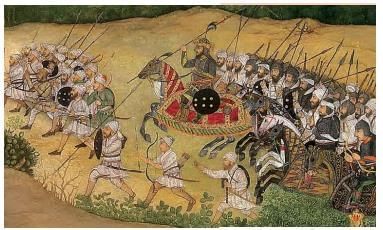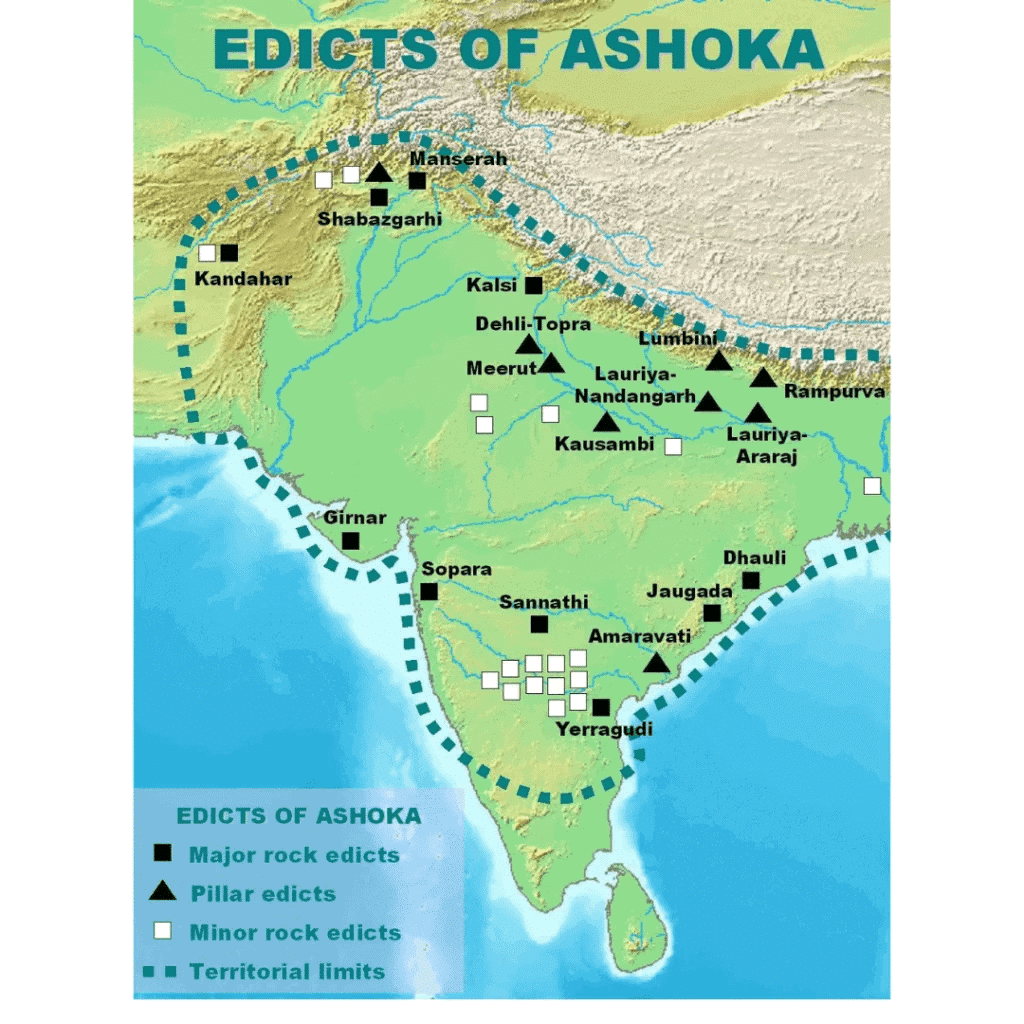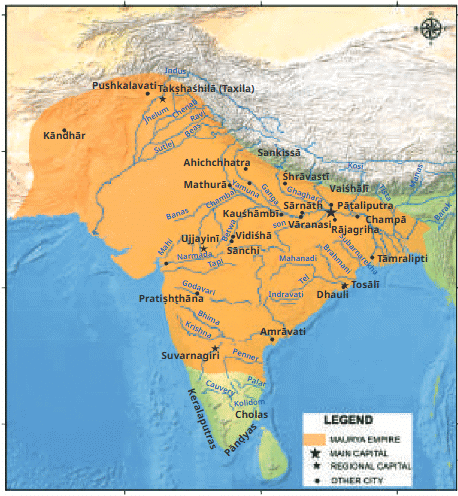CBSE Class 7 Social Science Chapter 5 The Rise of Empires Worksheet - Free Download
| Table of contents |

|
| Multiple Choice Questions (MCQs) |

|
| Fill in the Blanks |

|
| Very Short Answer Questions |

|
| Short Answer Questions |

|
| Match the Following |

|
Multiple Choice Questions (MCQs)
Q1: What is the main feature of an empire?
a) A ruler governs one kingdom.
b) A ruler controls many smaller kingdoms.
c) The kingdom is independent of others.
d) The ruler is elected by the people.
Q2: What did tributary kingdoms do in an empire?
a) They were fully independent.
b) They paid tribute to the emperor.
c) They ruled their own territories.
d) They supported military campaigns. Empire
Empire
Q3: Which of the following was a reason for the expansion of empires?
a) To maintain peace
b) To gain fame and resources
c) To form alliances
d) To promote democracy
Q4: Who helped Chandragupta Maurya to establish the Maurya Empire?
a) Dhanananda
b) Alexander the Great
c) Kauṭilya
d) Ashoka
Q5: What was the capital of the Maurya Empire under Chandragupta?
a) Pataliputra
b) Rajagriha
c) Kausambi
d) Ujjain
Q6: What did Kauṭilya's Arthashastra primarily focus on?
a) Religion
b) Warfare and governance
c) Literature
d) Agriculture
Q7: Who succeeded Chandragupta Maurya as emperor of the Maurya Empire?
a) Dhanananda
b) Ashoka
c) Ajatashatru
d) Mahapadma Nanda
Q8: What was the significant change in Ashoka’s rule after the Kalinga War?
a) He focused on expanding the empire further.
b) He became a pacifist and embraced Buddhism.
c) He implemented stricter laws for the empire.
d) He strengthened military power.
Q9: Which of the following was a key feature of the Maurya Empire’s governance?
a) Decentralized rule with local rulers in charge
b) Centralized administration with a strong military
c) Democracy where people voted for rulers
d) Isolation from foreign empires
Q10: What was the primary purpose of Ashoka’s edicts?
a) To celebrate military victories
b) To promote Buddhism and moral values
c) To establish a monarchy
d) To create a system of taxation
 Edicts of Ashoka
Edicts of Ashoka
Fill in the Blanks
Q1: An empire is ruled by a powerful __________.
Q2: The capital of the Maurya Empire under Chandragupta was __________.
Q3: The Maurya Empire's administration was based on __________.
Q4: Ashoka’s transformation after the Kalinga War led him to promote __________.
Q5: Kauṭilya, also known as Chanakya, wrote the __________ on governance and economics.
Q6: The Maurya Empire used __________ as a tool for managing and expanding the empire.
Q7: The __________ dynasty ruled Magadha before the Mauryas.
Q8: Ashoka’s __________ were inscribed on pillars and rocks throughout the empire.
Q9: The Maurya Empire was known for its __________, which was used to manage its vast territory.
Q10: __________ was a major resource for the Maurya Empire’s army, used for weapons and tools.
 Mauryan Empire
Mauryan Empire
Very Short Answer Questions
Q1: What is the Latin origin of the word 'empire'?
Q2: Who helped Chandragupta Maurya in establishing the Maurya Empire?
Q3: What was the main contribution of Ashoka’s edicts?
Q4: Which battle made Ashoka choose non-violence?
Q5: What was the capital of the Maurya Empire?
Short Answer Questions
Q1: How did the Nanda dynasty contribute to the rise of the Maurya Empire?
Q2: What was the role of Kauṭilya in the formation of the Maurya Empire?
Q3: How did the Maurya Empire impact trade and administration?
Q4: What were Ashoka’s views on governance, as seen in his edicts?
Q5: Why was the Kalinga War significant for Ashoka’s rule?
Match the Following
(Match Column A with the correct option in Column B)

For Worksheet Solutions, go to Worksheet Solutions: The Rise of Empires
|
1 videos|107 docs
|
FAQs on CBSE Class 7 Social Science Chapter 5 The Rise of Empires Worksheet - Free Download
| 1. What are the main factors that contributed to the rise of empires in history? |  |
| 2. How did trade routes impact the development of empires? |  |
| 3. What role did religion play in the rise of empires? |  |
| 4. Can you explain the significance of military conquests in the establishment of empires? |  |
| 5. What were some common administrative strategies used by empires to maintain control over their territories? |  |
















